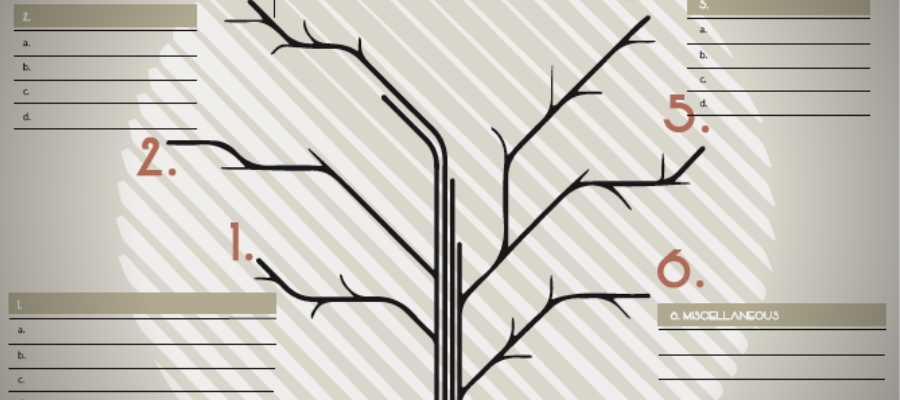
For most businesses today, content is their lifeblood. It’s a core part of how they inform, educate and persuade their ideal audience to invest in their products and services. But many of them face a major problem today:
They can’t produce high-quality content fast enough to keep their brand top-of-mind with their ideal audience. One reason for that, claims content strategist Carlijn Postma, is because they create far too much single-use content.
In other words, they publish a piece of content to their company blog, send out one set of social media posts and they’re done.
Check the box.
On to the next urgent task.
A clever solution: The content tree
To remedy this problem, Carlijn has devised a visual tool that is essentially a mind map, dressed up in the metaphor of a tree. It contains space to write down:
- The central “big idea” of your content campaign – a high-value asset such as a white paper, a special report or a webinar.
- Five subtopics within your major topic
- Five angles for each of the subtopics
Each of these ideas can be shared via a variety of channels (Twitter, LinkedIn, Medium, TikTok, etc.) and in multiple formats (short-form video, infographic, visual quote, Twitter thread, etc.). All of them link people back to your high-value asset, which is typically housed on a specialized web page called a “landing page.”
The message is clear: With a little bit of creative thought, enhanced by a visual aid, you can easily transform one piece of content into 20 or more stories.
Here’s what Carlijn’s template looks like, in its blank state.
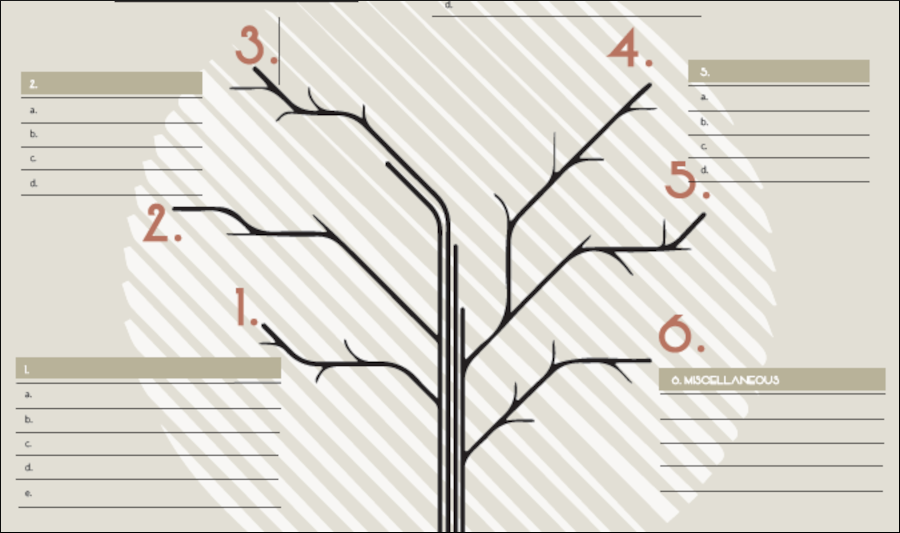
And here’s what it looks like, and a closeup of a branch filled out with topics and subtopics.
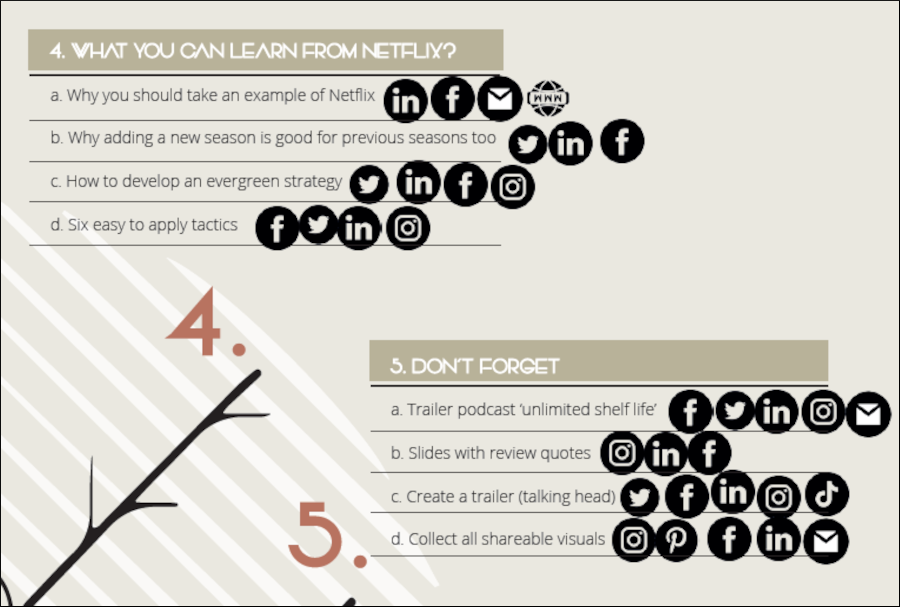
The blank template is available as a fillable PDF here.
Several things stand out to me about this visual content template:
- It’s a very useful and fun way to uncover the elements and angles lurking within a single topic.
- The author doesn’t stop with the ideas, but also uses it as a tool to identify where each piece should be promoted.
- From there, she transfers the topics and their targeted channels into a calendar that she can follow to take action on all of the moving pieces, ensuring high visibility for her premium piece of content for months to come (see the screenshot below).
How can you use this idea?
To make the content tree more useful to you, I created a digital version in MindManager, pictured below:
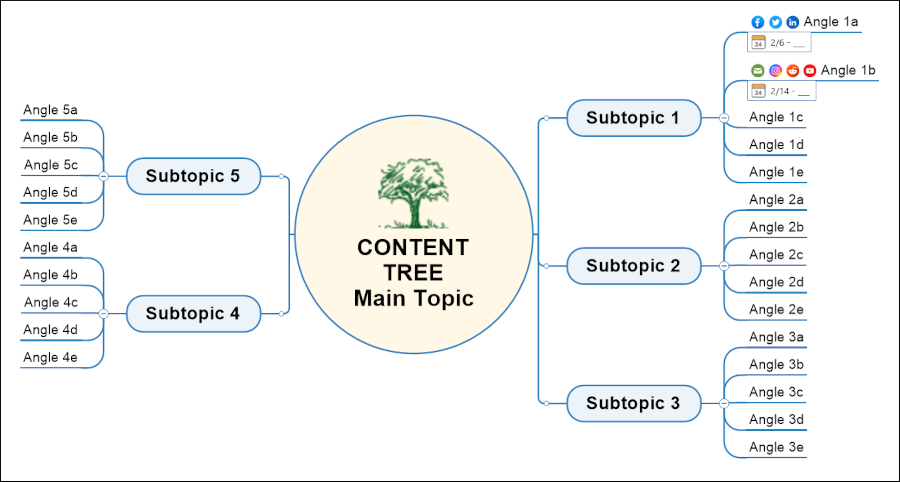
I created a set of custom social media icons, which I can attach to topics to show the social media channels to which I will promote each element of the main idea (shown more clearly in the closeup screenshot below).
![]()
Note how I’ve also incorporated dates into several of these items, following Carlijn’s example.
Why not build your own content tree? Or better yet, save yourself a few hours of time and download the MindManager template I’ve created (visible to Insider members – sign up for lifetime access to 100+ resources now, including this template).

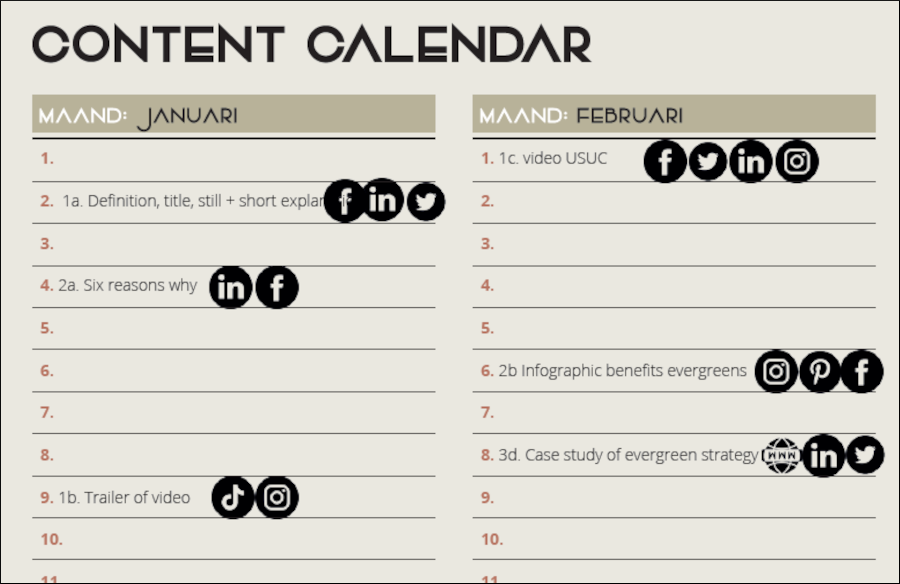
Leave a Reply